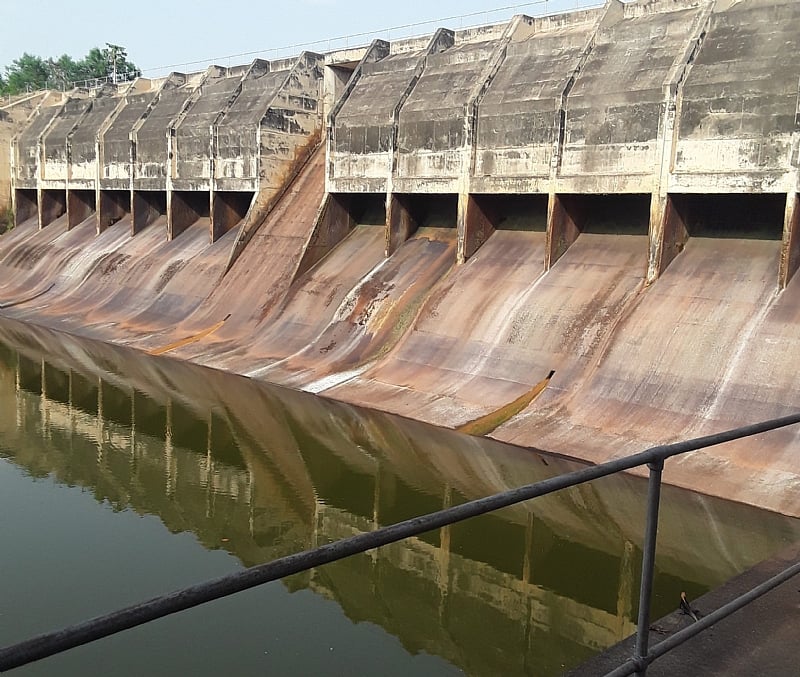The Barekese Water Treatment Plant, a vital source of potable water for numerous communities in the Ashanti Region of Ghana, experienced an unexpected shutdown on Thursday, September 25, 2025, at 9:00 am. This disruption stemmed from power supply inconsistencies originating from the Electricity Company of Ghana (ECG). The Ghana Water Company Limited (GWCL), responsible for the plant’s operation, issued a public statement attributing the shutdown to an episode of low voltage that rendered the plant’s equipment unable to function effectively. This unforeseen event underscores the vulnerability of critical infrastructure to power fluctuations and highlights the interconnectedness of various utility services. The GWCL assured the public that they were actively monitoring the situation and awaiting the restoration of normal power supply before resuming operations. They also pledged to keep the affected communities updated on the progress of power restoration and the eventual recommencement of water production.
The shutdown of the Barekese Water Treatment Plant carries significant implications for the affected communities in the Ashanti Region. The plant plays a crucial role in providing a consistent supply of treated water for domestic, commercial, and industrial purposes. Its sudden incapacitation creates a ripple effect, disrupting daily routines and essential activities that rely on access to clean water. Households face challenges with cooking, cleaning, and personal hygiene, while businesses and industries dependent on water for their operations experience disruptions in their productivity. The situation also raises concerns about potential health risks associated with water scarcity, particularly the increased likelihood of waterborne diseases if alternative sources of water are not readily available or adequately treated.
The reliance on the Barekese facility underscores the importance of investing in robust and resilient infrastructure for essential services like water supply. This incident serves as a stark reminder of the potential consequences of power instability on critical infrastructure and the need for proactive measures to mitigate such risks. Diversifying power sources, implementing backup power systems, and strengthening the power distribution network are crucial steps towards ensuring the continuous operation of essential facilities like water treatment plants. Furthermore, regular maintenance and upgrades of the plant’s equipment can enhance its resilience to voltage fluctuations and other potential disruptions.
Beyond the immediate impact of the shutdown, this incident highlights the broader challenges faced by developing countries in providing reliable access to essential services. Investment in infrastructure often lags behind the growing demand, leaving communities vulnerable to disruptions caused by power outages, equipment failures, and other unforeseen circumstances. Strengthening partnerships between government agencies, utility companies, and international organizations can facilitate the mobilization of resources and expertise needed to improve infrastructure resilience and ensure the sustainable provision of essential services.
Addressing this challenge requires a multi-pronged approach. Firstly, strengthening the power grid and ensuring a stable electricity supply are paramount. This involves investing in new power generation capacity, upgrading transmission and distribution infrastructure, and implementing smart grid technologies to enhance grid stability and resilience. Secondly, diversifying power sources for the water treatment plant can reduce its dependence on a single source of electricity. Exploring options such as solar or wind power can provide backup power during grid outages and minimize the impact of future disruptions. Thirdly, enhancing the plant’s internal infrastructure, including installing voltage regulators and surge protectors, can improve its ability to withstand power fluctuations and prevent shutdowns caused by low voltage.
Furthermore, developing contingency plans for water supply during emergencies is crucial. This could involve establishing alternative water sources, such as boreholes or rainwater harvesting systems, and ensuring the availability of water tankers to distribute water to affected communities during plant shutdowns. Public awareness campaigns can educate communities about water conservation practices and the appropriate use of alternative water sources during emergencies. Finally, fostering collaboration between the GWCL and the ECG can improve communication and coordination in addressing power-related disruptions to water supply. Regular consultations and joint exercises can help identify potential vulnerabilities and develop effective strategies to mitigate the impact of future power outages on water treatment facilities. By implementing these measures, the Ashanti Region can strengthen its resilience to infrastructure disruptions and ensure the consistent provision of essential services to its communities.


